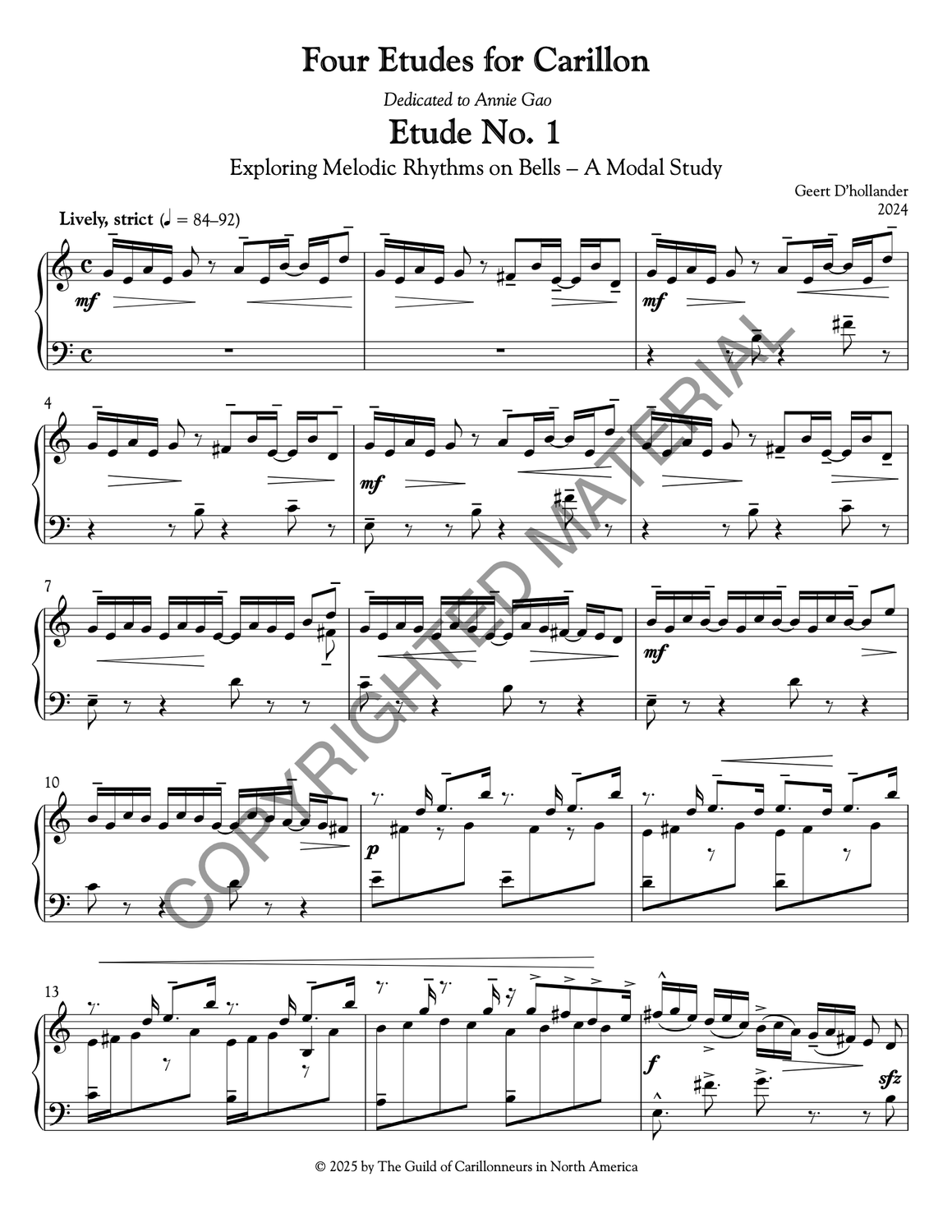
Four Etudes for Carillon
2nd prize, 2025 Franco Composition Contest
Program notes
Those of us who are familiar with many of Geert's compositions know that he is conversant in many styles and techniques of composition. There is so much variation among his pieces that one really cannot immediately identify a piece as being one of his compositions. This set of pieces is particularly interesting because it offers us a taste of several contrasting styles, with the titles and subtitles helping us know what to listen for. The first, third, and fourth etudes all have many syncopated rhythms, for a lively effect that is at times, jaunty, but at other times urgent and intense.
Etude 1: Exploring Melodic Rhythms on Bells – A Modal Study
What sets Etude No. 1 apart is the exploration of various modes – sometimes church modes, but occasionally, other unusual but mostly-diatonic tonalities. The first twenty-two measures are written in Aeolian mode (natural minor), but based on E. As the piece unfolds, there are passages in Lydian mode (in this case, based on E♭), the "natural overtone scale" (major, but with raised fourth and lowered seventh scale degree), a passage in E♭ major, then several unusual combinations of harmony, such as D major with occasional chords in B♭. It's a spicy, attractive piece.
Etude 2: Exploring the Singing Qualities of Bells – A Neo-Romantic Study
The rhythm in the melody in this etude is much calmer and more consistently lyric and singable than in the other etudes. The harmonies themselves are predominantly major and minor, but with "non-functional" harmony – freely jumping from one key area to another without trying to modulate between them, resembling some pieces by impressionist composers Debussy and Ravel.
Etude 3: Exploring Unexpected Harmonic Shifts on Bells – A "Modern-Tonal" Study
Initially, the music is presented in four-measure sets, starting with repeated patterns of notes, followed by several chords that spread out to wider intervals as the move higher in pitch ("evaporating," one could say). Those same musical ideas continue, but the repeated-note patterns and the evaporating chords run on longer.
Etude 4: Exploring the Percussive Qualities of Bells – An Octatonic Study
The fourth etude is loaded with irregular rhythms and syncopated accents. As the subtitle indicates, it is written in the octatonic scale, alternating semitones and tones (C, C♯, D♯, E, F♯, G, A, B♭, C). Henk Badings, Roy Hamlin Johnson, Gary White, John Pozdro, John Courter, and John Gouwens have all written many pieces using permutations of this scale – especially Johnson – but unlike the examples from the aforementioned composers, the close-spaced and quickly-shifting harmonies in this piece tend to emphasize the dissonant aspects of the scale, rather than using it to open up the possibilities for unusual modulations and key relationship in a mostly tonal context. There is a sense of great urgency in this piece, with the combination of the harmonic tension, the perpetually shifting rhythms, and the relentless pace at which it unfolds.
—John Gouwens

![[PDF] Four Etudes for Carillon [PDF] Four Etudes for Carillon](https://d2j6dbq0eux0bg.cloudfront.net/images/9481258/4958192937.png)